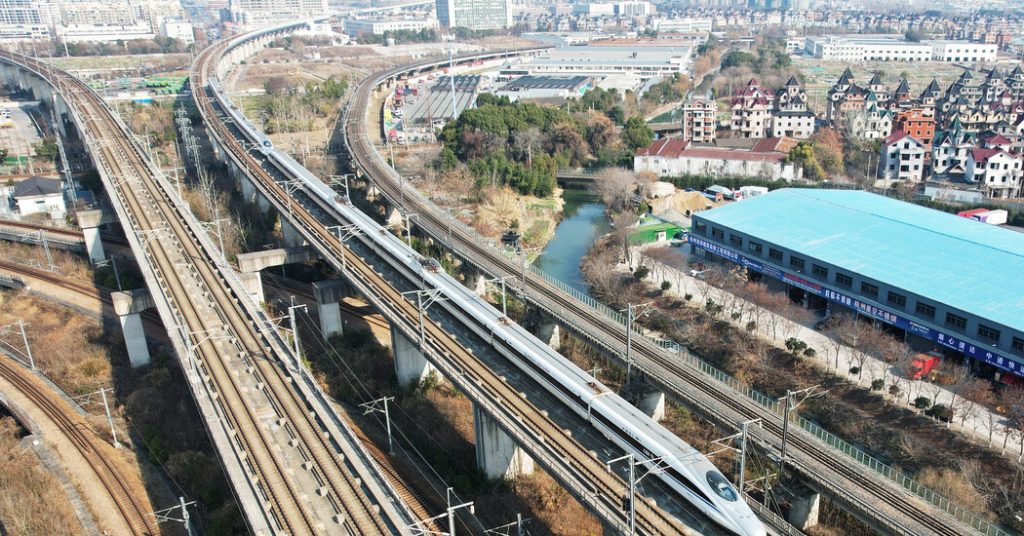China is implementing a rare increase in fares for four major bullet train lines in an effort to address rising costs and heavy debts incurred during the construction of the railway system over the last two decades. This price hike is part of a broader move to raise prices for public services in China, which are heavily subsidized by local governments. The aim is to stem losses at state-owned enterprises that provide these services and help offset falling prices in the slowing Chinese economy. The government is also increasing electricity charges for factories while keeping residential rates low.
The bullet train system in China is a symbol of the country’s impressive infrastructure development, with a network spanning 28,000 miles connecting major cities and smaller towns. This massive undertaking has been financed through significant borrowing, leading to mounting debts for state-owned enterprises like China State Railway Group. The government is now shifting its growth strategy away from infrastructure investments toward high-tech manufacturing and exports, prompting concerns from the United States and Europe about potential job losses.
The fare increases on bullet train routes, set to take effect on June 15, have sparked criticism and discussion on social media in China. Many citizens have expressed dissatisfaction as salaries remain stagnant and real estate prices decline. Peak fares on certain routes, such as those from Hangzhou to Shanghai and Wuhan to Guangzhou, will rise by almost 20 percent for first- and second-class tickets, and up to 39 percent for business-class seats. The rail system aims to offer deeper discounts for off-peak tickets and slower trains as a result of the fare hikes.
Despite the price increases, China’s bullet trains remain less expensive than those in the West. A second-class high-speed train ticket for a nearly 600-mile trip from Wuhan to Guangzhou will cost $78, with first-class and business-class seats priced higher. Some smaller cities with less economic growth have seen limited usage of the bullet train system, while major metropolises like Shanghai experience crowded train stations, especially during holidays.
The rapid development of high-speed rail has led to the growth of new towns and cities along the train lines, with many people using the system for commuting between low-cost areas and high-cost urban centers. China State Railway continues to invest in expanding the network to connect outlying areas, despite operating profits remaining modest compared to its extensive debt. The government’s efforts to shift focus from infrastructure investments to high-tech manufacturing are aimed at economic transformation, but the challenges of managing debt and rising costs remain significant.


